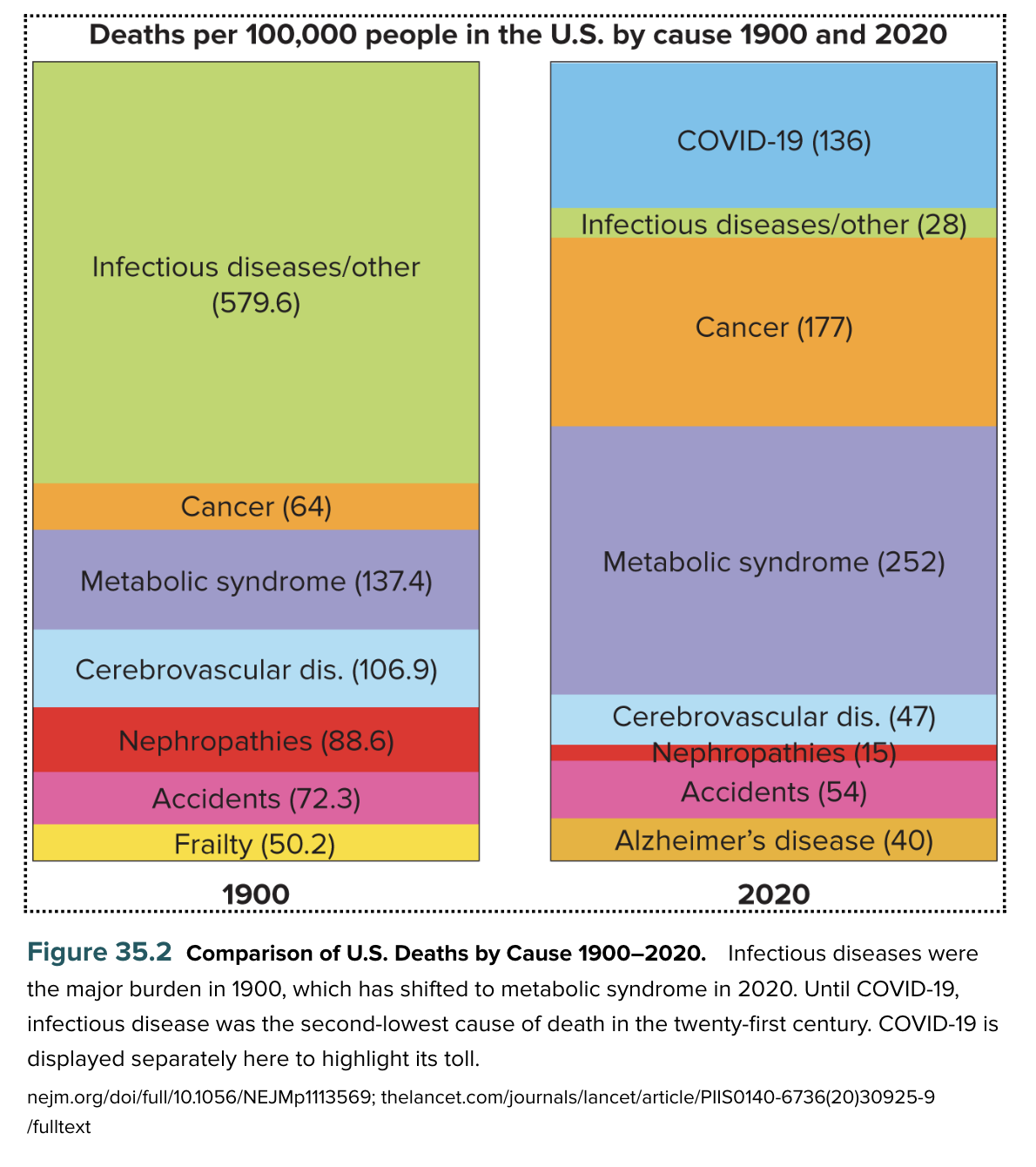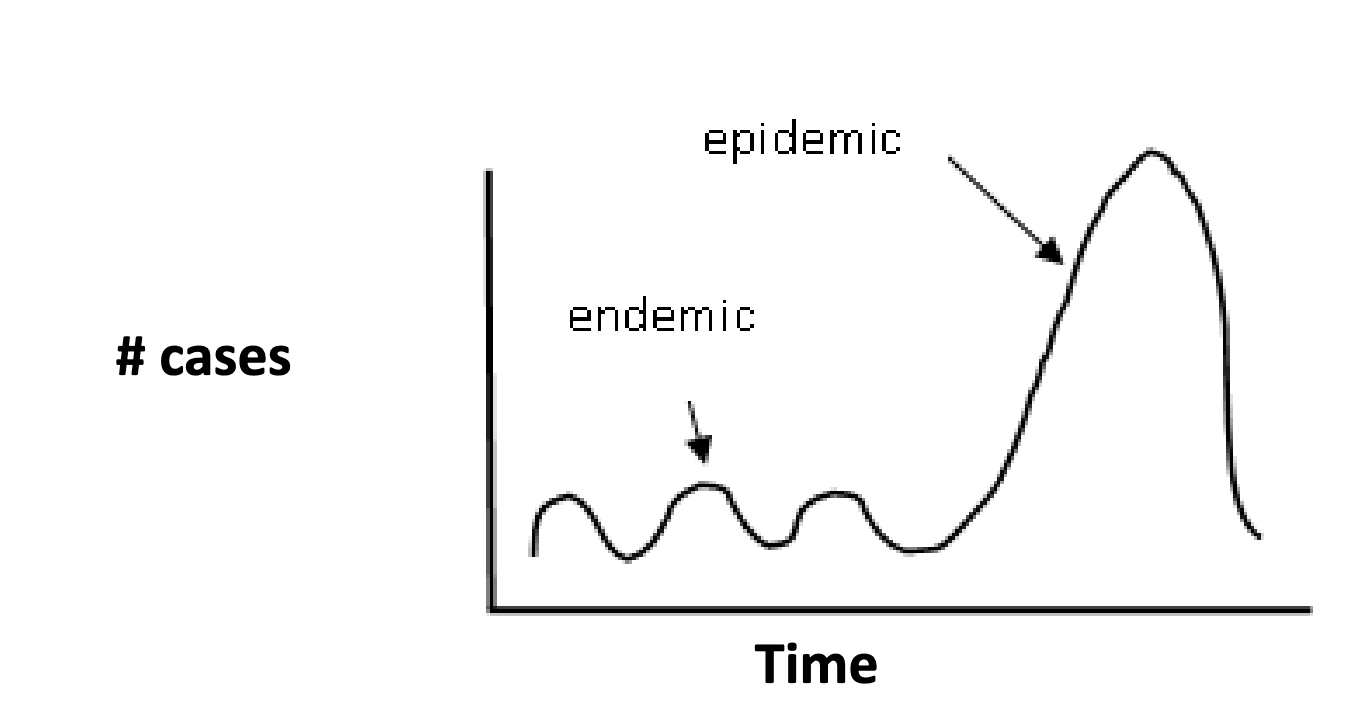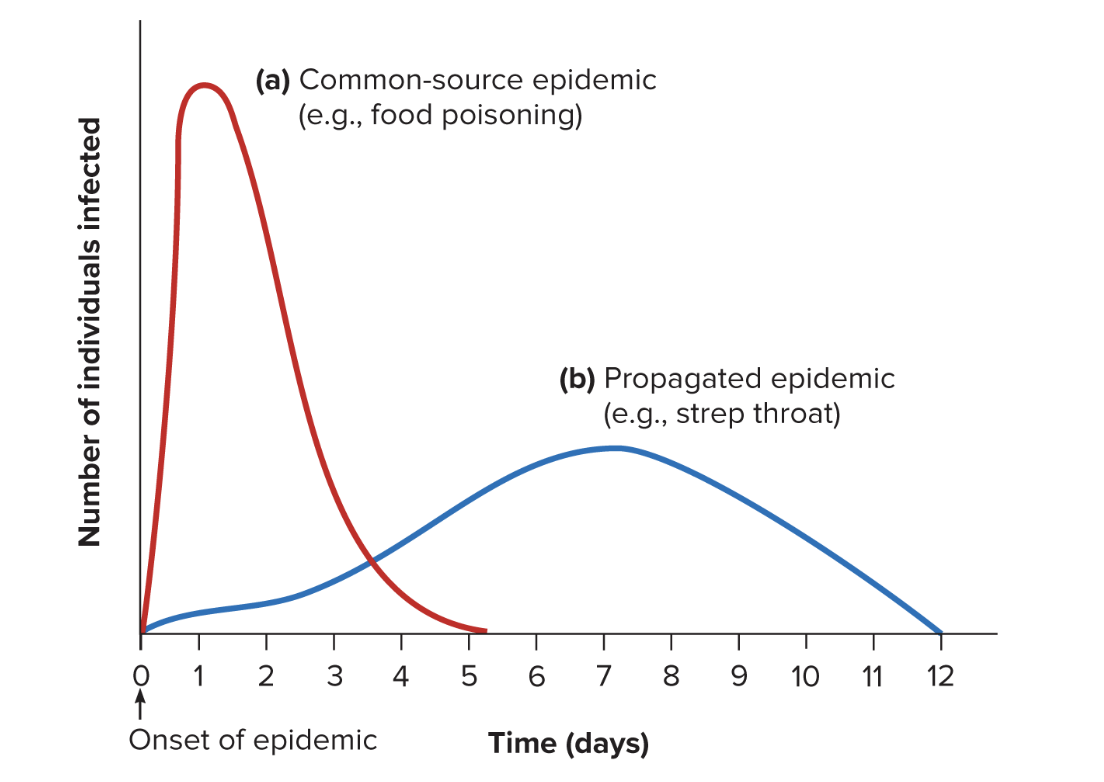gen microbio lecture 23: epidemiology
1/48
There's no tags or description
Looks like no tags are added yet.
Name | Mastery | Learn | Test | Matching | Spaced |
|---|
No study sessions yet.
49 Terms
what is epidemiology?
it evaluates the occurence, determinants, distribution, and control of health and disease

john snow
english physician
father of epidemiology
known for the cholera outbreak in london (1849)
cholera outbreak in london (1849)
source was unknown
mapped the location of diarrheal cases
density of cholera cases and a single well on broad st. (epidemic ended)
fecal material from cesspit leaked into drinking water
what was the hypothesis of the cholera outbreak in london?
if the cases are clustered geographically, it might determine the source
what does modern epidemiology include?
infectious disease
other health related issues (accidents, smoking, lead poisioning, aging)

what are the major organization for coordination of info in modern epidemiology?
CDC (Centers for Disease Control and Prevention)
WHO (World Health Organization)
sporadic
occasional and irregular intervals (isolated cases - no threat to the rest of the population)
endemic
steady, low level frequency at moderately regular interval
epidemic
suddenly higher than normal (influenza)

outbreak
localized epidemic
pandemic
increase in occurence in large population over very wide region
index case
patient zero
1st case
track down and then contact trace (treat or seperate from population)
notifiable disease
required by law to report and every case goes to authorities
what does the national notifiable diseases surveillance system (NNDSS) do?
monitors and controls and prevents around 120 diseases
what are the two major types of epidemics?
common source
propagated epidemic
what is common source epidemic?
single contaminated source (food or water)
reaches peak level in a short period of time (1-2 weeks)
moderately rapid decline in the number infected
what is an example of common source epidemic?
cholera

what is propagated epidemic?
host to host epidemic
introduction of a single infected individual into susceptible population
initial infection propagated gradually (relatively slow and prolonged rise → infects multiple individuals and then there is a gradual decline in # infected)

highest point in susceptibles (1)
all individuals in population are susceptible to the pathogen
time = 0 (2)
introduction of infected individual
initiates the epidemic
spreads and then reaches peak (day 15)
as individuals recover from disease (3)
become immune and no longer transmit
# of susceptible individuals decrease
threshold density (4)
minimum # of individuals needed to propagate disease
decline in susceptible to threshold density
as the number of cases decrease
the pathogen cannot propagate itself
herd immunity
the resistance of population to infection and pathogen spread
the larger the proportion of those immune,
the smaller the probability of contact between infected and susceptible individuals
why is the susceptible member of population enjoy the immunity from being the member of the group?
because the immunity is not self-made
why should you immunize large portions of susceptible population?
to maintain high levels of herd immunity
what are the restrictions of herd immunity? (aka when does it work and when does it not work?)
it works only if spread is by person-person contact
does not work if spread by contact between people
what is an example of herd immunity?
tetanus
clostridium botulium
soil
transmission through the punctured skin
endemic disease can also be?
epidemic
what 2 things happen when there is an increase in # of susceptibles?
new individuals entering the population
antigenic shift of pathogen
what happens during antigenic shift of pathogen?
major genetic change → changes antigenic character
pathogen not recognized by immune system (ex. influenza virus)
components of infectious disease cycle that is responsible for particular epidemic
the control measures detected towards the most susceptible part of the cycle

types of control measures
reduces or eliminates source or reservoir of infection
isolation procedures
vaccination
reduces or eliminates source or reservoir of infection
destruction of animal reservoir of infection
destruction of vectors by spraying with insecticides
chlorination or water supplies
therapy to reduce infection
isolation procedures
break connection between infected and susceptible
private. closed room
wash hands
PPE
vaccination
decrease number of susceptibles and increase levels of herd immunity
3 types of vaccines
killed organism
live, attenuated microbes
purifed components (subunits) from infectious agents
example of killed organism
hepatitis A vaccine, salk polio vaccine
live, attentuated (weakened) microbes example
sabin polio vaccine, BCG for tuberculosis
this one is usually the best as weakened microbe replicates in normal body temperature and immune response develops
example of purified components for infectious agents
capsular antigens from streptococcus pneumoniae (all of them stimulate immunity)
polio infection pathway
poliovirus typically enters body through ingestion
replicates in the GI tract
moves to the regional lymph nodes and produces viremia (virus in the blood) - 75% of the cases, which is b
~1% of the cases of polio
the virus attacks the central nervous system (CNS) and causes paralysis in the body
what are the 2 vaccines?
salk vaccine
sabin vaccine
how does the salk vaccine work?
salk vaccine = IPV (inactivated polio vaccine)
killed
injected → antibody (Ab) response in the bloodstream
Ab response prevents the viremia and paralysis by natural infection
does not prevent GI replication with natural virus
how does the sabin vaccine work?
sabin vaccine = OPV (oral polio vaccine)
replicates in the GI mucosa
antibodies are secreted in the mucosa and prevents natural virus from replicating in the mucosa
can the virus in the vaccine revert to virulent form in the intestine
yes
ACIP (advisory committee on immunization practices)
theres 2000 recommended that IPV can be used in the united states.
polio is rate and fecal spread unlikely (eliminated VAPP from us)
what are the 4 ways to administer vaccines?
individually (influenza viral envelope)
polyvalent: control of multiple diseases (ex. MMR)
most during childhood (diseases can be devasting)
booster doses (2nd degree exposure to Ag provides more robust and long-lasting immunity)